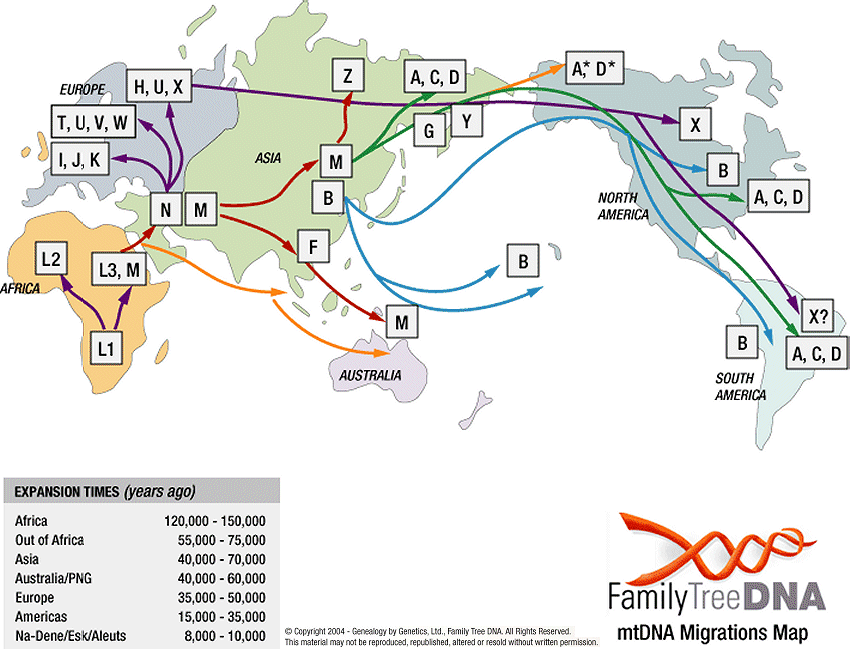Recently on WikiTree someone asked me ‘Dumb question, What are Haplogroups?’
Thinking it was not a dumb question at all I gave the following answer.
A haplogroup is a grouping of common patrilineal or matrilineal lines who share a common ancestor. The main haplogroups are divided by letter, and smaller sub-divisions by letter and number. For example H is a very large group, H1 is a subgroup of H, H1a is a subgroup of H1, and so on. The further you narrow it down the closer in years the common ancestor is.
Small parts of our DNA do not change much over time. Geneticists have used these parts to identify population groupings, where they live, and their movement through human history. Certain haplogroups occur with greater frequency in certain areas which is what leads to them be categorized as African, European, Asian, Native American etc.
Males have a paternal and a maternal haplogroup. Their paternal haplogroup is inherited along a direct paternal line – your father’s father’s father’s, etc.. The maternal haplogroup is inherited from your direct maternal line. Females only have a maternal haplogroup.
Here is a mapping of maternal haplogroups:  http://www.worldfamilies.net/files/image/migration_map_wfn(1).gif
http://www.worldfamilies.net/files/image/migration_map_wfn(1).gif
You can see from this map what part of the world the groups are associated with. If you get into the details of the haplogroups it will show how the groups branch out from one another. Mitochondrial Haplogroup L is the mother of all other groups. On a long enough timeline everyone’s ancestry goes back to Africa (more than 75,000 years ago). But these haplogroups identify ancestry in more recent times (within the last 50,000 years) when new haplogroups M and N were emerging.
My own maternal DNA
For example my mother is haplogroup H. This is the biggest group for Europeans. It is estimated that the common ancestor of this group is a woman who lived in the Caucasus/SW Asia between 33,000 and 26,000 years ago. Depending on the test you take you can get more detail. H is a daughter group to N which branched of as much as 75,000 years ago, which is a daughter group to L – going back 200,000 years in Africa.
My mother did an mtDNA test that further narrowed her haplogroup to H1as. Certain lineages of H1 are thought to have been introduced by hunter-gather women in Europe about 18,000 to 22,500 years ago. H1as is one of at least 65 current subdivisions of H1. As is it stands very little is know about H1as.
Keep in mind that the understanding of these groups changes over time as people learn more. New groups are being discovered as time goes on.

You wrote:
Males have a paternal and a maternal haplogroup. Their paternal haplogroup is inherited along a direct paternal line – your father’s father’s father’s, etc.. The maternal haplogroup is inherited from your direct maternal line. Females only have a maternal haplogroup.
I ask:
Why don’t females have a paternal and maternal haplogroup? After all, they also have fathers. The last statement above needs further clarification and elaboration.
Thank you.